Energize Your Landscape With Masses of Grasses
http://decor-ideas.org 08/19/2013 13:15 Decor Ideas
Growing up with a meadow in my backyard informed my love of grasses in the garden, but building, observing and managing gardens gave me confidence in grasses' effectiveness. The way they dance in the wind, reflect and diffuse light, create shadows and evolve through the seasons makes them an important, durable and flexible addition to today's landscapes.
Whether they're highly stylized or more natural, grasses eventually become a landscape's dominant species. Their simple planting palettes allow a home's architecture to be more fully appreciated and to harmonize with the regional landscape.
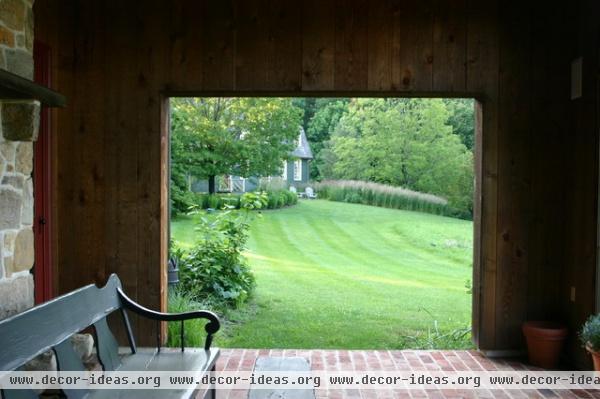
Plant in masses. Grasses planted in masses create a dynamic experience. The drift of feather reed grass (Calamagrostis 'Karl Foerster', USDA zones 3 to 9) in this photo connects and frames a view of the meadow beyond. This tall cool-season grass screens undesirable views and harmonizes with the greater landscape.
It brings life to the winter landscape as well — this grass can stay standing until the early part of spring, when it's cut to the ground in anticipation of new growth.
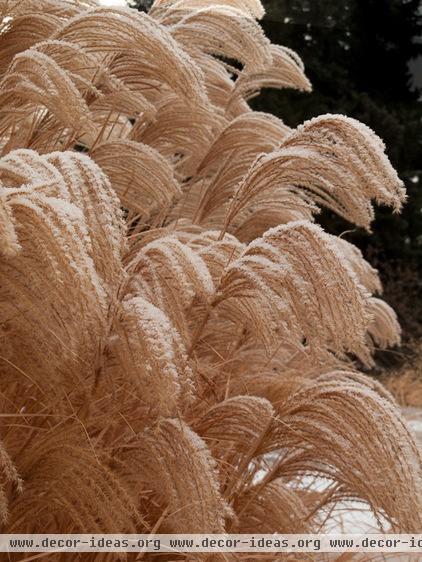
Consider views from your home. Choosing plants that change color throughout the year can make a powerful impact, even in the winter. Reed grass (Calamagrostis spp), bluestem (Andropogon spp), woodoats (Chasmanthium spp) and Spodiopogon are a few of my favorite grasses in the frost and snow.
This maiden grass (Miscanthus sinensis 'Gracillimus', zones 5 to 9) shows the magic of the winter landscape — I love how the snow sits on the seed heads.
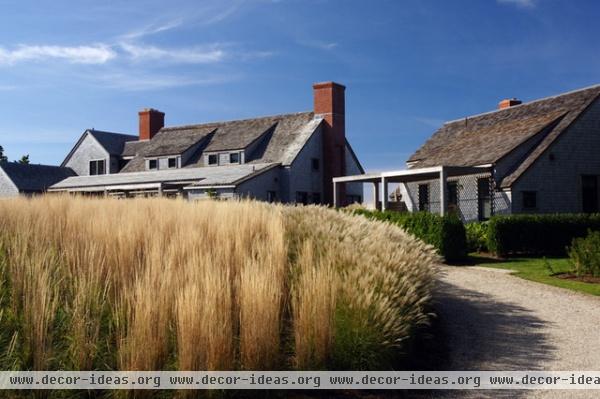
Plant in context. Context is critically important in garden design. A handful of grasses set in a grouping of evergreen shrubs or flowering plants reads more shopaholic than Zen. Be bold and plant large groupings of grasses on their own.
Grand masses of Pennisetum and Calamagrostis seat this home beautifully in the landscape. This is as modern as planting design gets. No gaudy plants to call specimens or ornaments — just plants in a sublime composition.
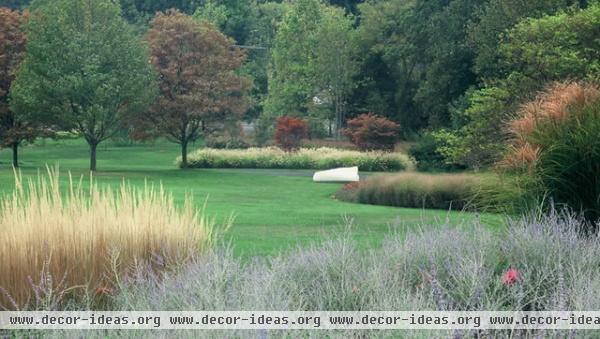
Stay low maintenance. Underplanting airy, warm-season woody shrubs, like Perovskia, can help suppress early cool-season weeds. Grasses like autumn moor grass (Sesleria autumnalis, zones 5 to 8), prairie dropseed (Sporobolus heterolepis; zones 3 to 9) or sedge (Carex pensylvanica, zones 3 to 8) can also help reduce management needs.
Grand masses of grasses complement blocks of perennials in this landscape, along with a favorite woody perennial, Russian sage (Perovskia atrriplicifolia, zones 5 to 9). Both of these grasses are long lived and in time win out over most weeds. Underplanting these with bulbs won't disturb the roots of grasses.
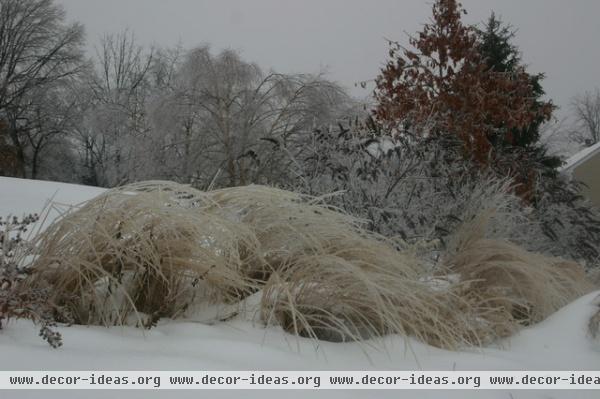
Enjoy through the winter. Leave grasses and flowering perennials up through the winter. You'll learn through observation what plants have a fantastic winter presence and which plants look messy and need to be cut back in the fall.
This Calamagrostis 'Karl Foerster' was frozen to the ground in January in this Pennsylvania garden. The next day the grass was standing straight up. This true workhorse of a plant is considered cool season and can be 3 feet high before most grasses even emerge from their winter sleep in the mid-Atlantic.
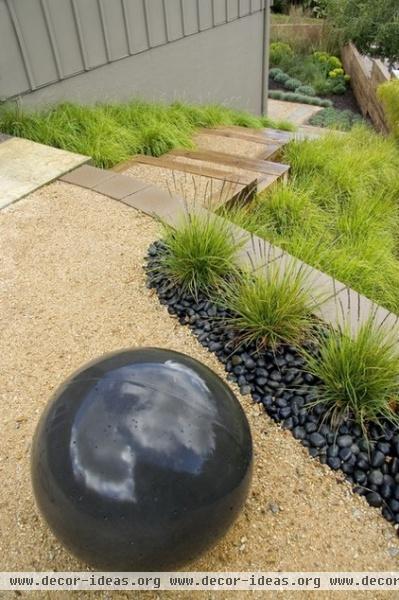
Look for year-round green. Autumn moor grass, a tough plant that will take a variety of soils, makes a great ground cover. This grass stays evergreen through most winters in the Philadelphia area — a pleasant burst of color in dreary weather. Along with reed grass (Calamagrostis brachytricha, zones 4 to 9) and most Carex, this grass grows with great success in light shade.
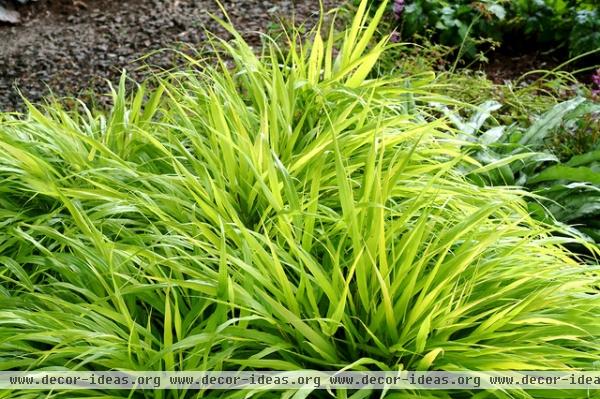
Embrace seasonal color changes. Japanese forest grass (Hakenachloa macra, zones 5 to 9) may be one of the finest woodland grasses for dry shade. The foliage always looks clean and lush in summer and turns a beautiful blonde in the winter. The chartreuse foliage of the cultivar 'All Gold' brightens landscapes, and I've never seen it revert the way other cultivars do. Try these two under maples and other trees with surface roots.
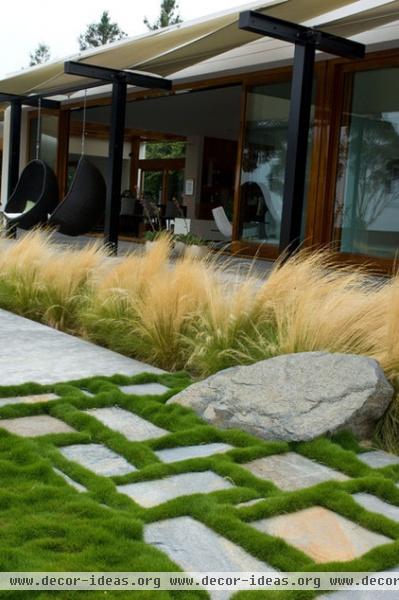
Highlight textures. Play with grasses that stand out for their texture rather than their color. Mexican feather grass (Stipa tenuissima, zones 6 to 10), for example, has beautiful fine foliage and a billowy inflorescence. This is a very versatile plant that's native to the Southwest, but I have seen this plant thrive for several years in gardens on the East Coast. In the mid-Atlantic, I like this planted in blocks around flowering perennials, like giant hyssop (Agastache 'Blue Fortune', zones 5 to 9).
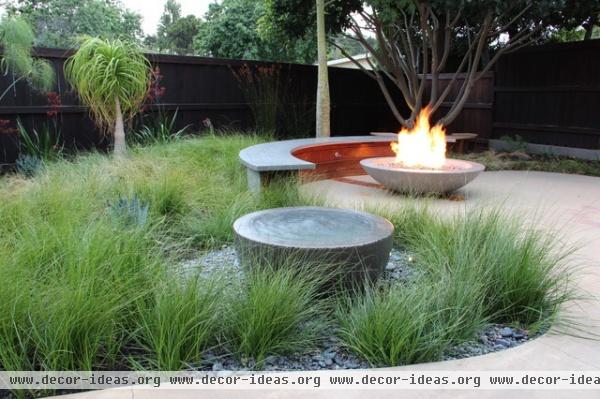
Let grasses dominate the ground plane. This garden uses Carex in a simplified mass to dominate the ground plane. Punctuations of agave add to the artful approach of this planting design. The millstone fountain, fire bowl and seat wall are great architectural features. I imagine this space is home to some great cocktail parties — I'm sure I'll be getting a call any day now.
Those who are daring and welcome failure as an exciting opportunity to learn will have great success in the garden. No matter how much I have read about plants and design, nothing has come close to informing me more than trial, error and observation. So do something crazy — like plant a drift of some grasses I didn't even mention in this story — and revel in the excitement of the unknown.
More: Let Nature Inspire Your Landscape: From Grasslands to Garden
Related Articles Recommended












